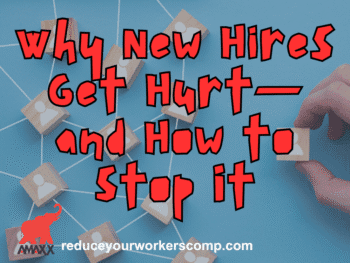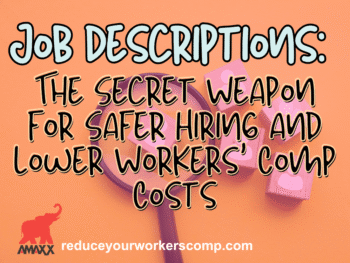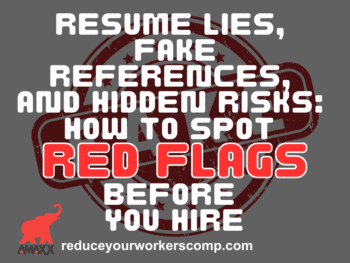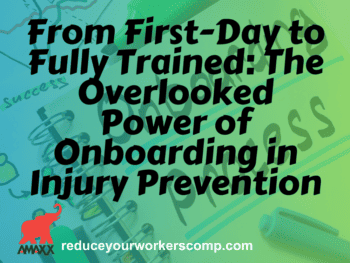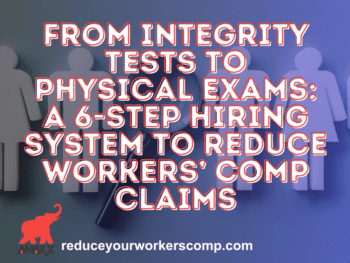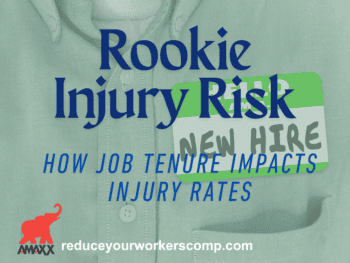A lot of employers strive to maintain a safer, more productive workplace for their employees. Every business would love to reduce costs and increase profit margins. The cost of claims can account for a big chunk of money losses, especially for the self-insured or self-administered employer.
So how do you get started? Where do you start, or better yet when do you start? The answer is RIGHT NOW, and here is how:
Step 1: Know Where Your Risk Lies
This process starts with a simple observation of your workplace. Keep the following factors in mind:
- Go through department statistics and see how they compare to each other regarding losses. Perhaps 75% of your injuries occur in the shipping department. Go down there and talk with the supervisor. Find out what the issues are and why they think injuries are happening. Then work together to solve the problem.
- Examine your loss run. Talk to your workers’ compensation insurance carrier and see if they notice any trends. Which people are getting injured? Maybe newer hires account for a lot of injuries. This may show that a focus needs to be directed toward training and safety.
- Look at your business. What do you do? What are the risks involved? Identify issues. Work on ways you can reduce your injuries or occurrences from happening in the first place.
Step 2: Develop a Plan of Attack
Once you have identified a few areas where you could improve on reducing injuries, it is time to solve the problem. What do you do to fix it? Planning is important, but the most important thing is to start, even if that is with small steps. The answer lies in the resources you have all around you:
- Talk to your carrier. Chances are the carrier has loss prevention specialists ready to help you work with what needs to be fixed. Ergonomic professionals can be brought in to address workstations and to suggest solutions to reduce exposure.
- Utilize your medical clinic contacts to see if occupational physicians can watch employees working. They can then identify potential issues with certain movements or repetitive-motion injuries.
- Utilize legal counsel by having them come in to explain the risks and costs associated with potentially serious injuries, automotive accidents, or failure to drug test your employees. Any or all of these will help you reach your goal of reducing risk exposure.
Step 3: Implement Your Solution
Get rid of old equipment and bring in new equipment with better safety features. Newer equipment costs less to maintain and repair and is quicker to operate. Most modern machines use less energy too. Install padding on the floor for workers to stand on at their workstations. This reduces strain on feet and legs, and reduces body fatigue. Whatever the fix might be, get it done. Out with the old — in with the new!
Step 4: Measure Your Success Statistics
Now it is time to measure your reductions. Take a two, four, or six-month period of time to quantify your results. Did you see a drop in claim activity? Did claims increase, meaning your plan backfired? Be patient. Change is disruptive to employees. Give it time, and measure your numbers post-change against the ones you first noticed back when you were figuring out where your risk was coming from.
Step 5: Get Feedback From Employees
Taking time to speak with your employees increases morale and makes them feel involved in the process. Ask them the following questions:
- How do they feel it impacted their workday?
- Were the changes helpful, or did they hurt production?
- How do they feel at the end of the day?
- Do they feel less sore, or are the new workstations worse than the old ones?
Ask as many questions as you can. This makes your staff feel that their input is important, and taken into account. A supervisor once said, “It is hard to fully embrace change. To make things easier, you have to ‘lean’ into it a bit at a time until you have accepted the entire package of change.”
This is true on many levels. Even though it is hard work to find out what your risks are, discover how to attack them, implement changes, measure success, and get worker feedback, in the end, it will be worth it. Lean into the task. Do not try to tackle it all at once. As I have always said, “Don’t eat an elephant in one bite.”
Conclusions
Change is sometimes a difficult thing. However, proactive employers need to drive change to reduce workers’ compensation program costs. It not only can reduce injuries and their severity but increase company morale and make a workplace more efficient.

Author Michael Stack, CEO Amaxx LLC. He is an expert in workers’ compensation cost containment systems and helps employers reduce their workers’ comp costs by 20% to 50%. He works as a consultant to large and mid-market clients, is a co-author of Your Ultimate Guide To Mastering Workers Comp Costs, a comprehensive step-by-step manual of cost containment strategies based on hands-on field experience, and is founder & lead trainer of Amaxx Workers’ Comp Training Center .
Contact: mstack@reduceyourworkerscomp.com.
Workers’ Comp Roundup Blog: https://blog.reduceyourworkerscomp.com/
©2019 Amaxx LLC. All rights reserved under International Copyright Law.
Do not use this information without independent verification. All state laws vary. You should consult with your insurance broker, attorney, or qualified professional.





